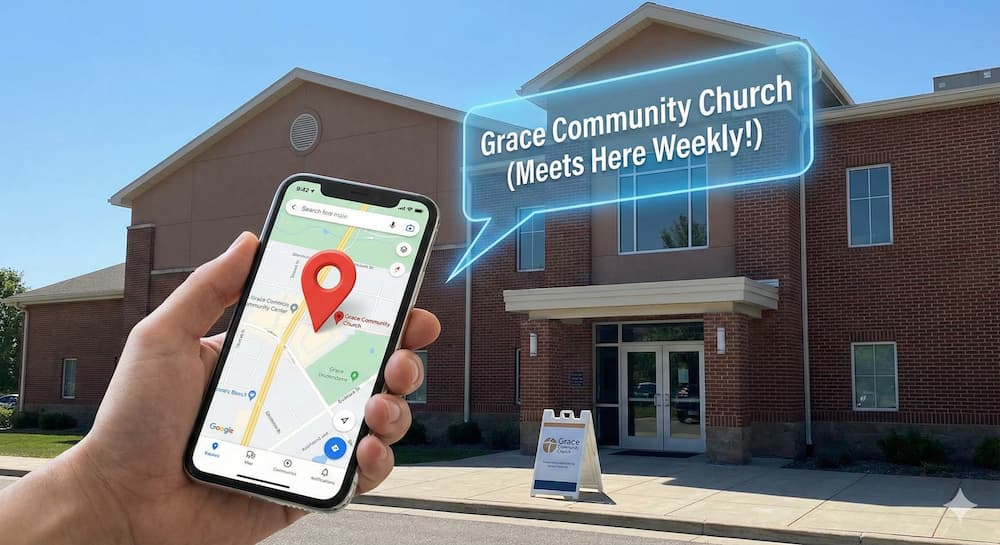4 Lessons I Learned After Donating Online to 10 Nonprofit Organizations

Editor's Note: This is a guest post from Robert Carnes. Robert is a writer and storyteller. He's the author of The Original Storyteller: Become a Better Storyteller in 30 Days. A former church communicator and nonprofit marketer, Robert works as a managing editor for Orange in Atlanta.
We hold this truth to be self-evident—nonprofits rely on donations. No matter what the cause, the size or the location of the organization—chances are their support comes from the charitable giving of others.
Endless online giving research has been done on what motivates donors. Why do they give? How can we get them to give more? What is the best way to communicate with donors?
I’ve seen some of this research myself. However, I wanted to experiment on my own by taking on the perspective of the giver. How do different nonprofits respond to donations?
The experiment
During December 2016, I donated $50 to 10 nonprofit organizations. Some were small local nonprofits. Others were major, internationally recognized brands. My goal was to compare the giving and cultivation experiences on a variety of levels.
I donated online for the sake of ease and consistency. It ensured that my gifts would be received at the same time. Online giving is also the future of the industry. It seemed the best way to test out how well these organizations were prepared to use technology.
I gave $50 because it was a donation large enough to warrant some level of response. Also, all of this money came out of my pocket. As a nonprofit professional myself, I know the value of working on a budget (and a limited salary).
This experiment was far from scientific. I made an effort to remain objective, but the results are more observational than exact. Take my findings with a grain of salt.
The nonprofits
Below is the list of 10 nonprofit organizations I chose to give to. Half are local nonprofits in Atlanta. The other five are global, but all based in the United States.
- Love Beyond Walls
- Abiding Word Ministries
- Sunshine on a Ranney Day
- MUST Ministries
- Literacy Action
- Love Does
- New Story Charity
- Heifer International
- Zero End Prostate Cancer
- Charity: Water
I chose organizations that support a variety of causes, including poverty, hunger, housing, disease. However, I made sure to only select organizations that I would personally like to support.
The giving process
It took me about two hours to process $50 donations to these ten nonprofits. No doubt, this process was significantly slower than normal as I took notes and screenshots to document the process.

For that reason, I used a desktop computer, rather than a mobile device. However, all nonprofits should be sure to test out the mobile giving experience. More and more donors are choosing to give directly from their mobile phones.
Get Tithel.ly's mobile giving app for FREE
Here is a summary of some of my findings from the online giving experience:
- All ten charities that I chose had an online giving option.
- Nine out of 10 included a donation link in their main menu.
- In five cases, the giving option was more prominently displayed as a button. And in four cases, the link was the last item on the far right side of the menu.
- Nine out of 10 times, the term Donate was used. Only one website asked people to Give.
- Six of the giving forms had suggested giving levels—from as low as $10 to as high as $2,500. They ranged from between four to six recommended donation amounts.
- Two of the sites had the donation amount pre-populated: one for $60, the other for $200.
- Only four of the organizations recommended making the gift monthly or recurring.
- Four of the donation forms allowed donors the option to give using PayPal. For two others, PayPal was the only giving option.
- Four of the organizations allowed donors to select which projects the dollars would go toward, or give to a general fund. In those cases, I selected the general fund.
A good example
Charity: Water had a donation form embedded into the homepage of their website. Initially, I thought this might just be for the holidays, but it’s still currently at the top of their homepage.

Embedding a giving form is a great way to put the need and means to give at the forefront. It was also one of the more straightforward forms to fill out and one of the more visually appealing.
The email response
Thankfully, all 10 of the nonprofits had an automated Thank You email triggered following my donations. All but one of them came within five minutes of the gift. The one exception came trailing into my inbox a few hours later that day.
What was more interesting was the email follow up after this initial contact. Only two of the donation forms directly asked me if I wanted to sign-up for regular email updates. I clicked Yes in both cases to get the full giving experience.
Check out Email Fundraising for Churches: 5 Steps to Creating a High Response
Five of the nonprofits followed up with other solicitation emails within the next month. I try to open and read as many of these emails as I can.
Over six months later, I occasionally receive email updates from six out of the ten. The content of these emails includes donation asks, event promotions and accomplishments of the mission.
A good example
New Story has a charity model that’s built to show donors the impact of their support. 100% of donations go directly to supporting a new home for a family in a third world country.
All of the emails I’ve received from New Story are updates on the family my money helps. It took a few weeks for these messages to start arriving, but I can see directly where my money is going. And the emails come directly from a staff member and feel very personal.


Another good example
Love Does started a weekly email series called We Love Tuesdays. Every Tuesday, they send me an email with a beautifully designed graphic depicting the children they help and a quote.
A button allows you to download the graphic to share on social media; which I’ve done a few times.
This tactic works because it’s content beyond another ask for money. It’s a subtle reminder that Love Does exists and the impact they’re having.
The direct mail response
It took three weeks before any response came via postage. But I ended up receiving more direct mail than initially expected—more than 24 pieces in the six months since making the donations.
Normally, I’m not a fan of direct mail solicitations. However, it was more meaningful to receive this mail in response to my donations. Each piece of mail was a satisfying acknowledgement of my donation and a subtle reminder of my connection to that nonprofit.
- In total, I received print mail correspondence from seven out of the 10 nonprofits.
- The lack of printed response from the other three nonprofits was likely intentional. These three charities were no doubt more focused on the digital donor experience.
- In the first week of January, I received three handwritten postcards, two from the same organization. They were personalized and written by someone at both of the nonprofits.
- A week later, I got two automatic donor acknowledgment letters from two others. These were more formal in tone and didn’t include any photos or visual elements.
- The final week of January, two more postcards came from two different organizations.
- In February, I received two newsletters updating me on how my donations were used.
- I’ve filed all of these direct mail pieces away for examples as future design inspiration.
Some good examples
Several of the nonprofits—Heifer International, Love Does, Sunshine on a Ranney Day—sent simple postcards with a bold image on one side and a personalized message on the other. Postcards are an inexpensive way to share a custom note to a donor.
MUST Ministries even mailed a letter out inside of a brown paper bag, which was appropriate since part of MUST’s mission is delivering meals to underprivileged children. The brown paper bag was a recognizable symbol of how they help the community.

What I learned after donating online
- No matter how we think that our messaging might be stale, our donors aren’t seeing them as often as we are. Don’t be afraid to repeat a single message just a bit harder to ensure that your audience hears you. I didn’t often hear consistent messages among the nonprofits; those that were consistent stood out significantly more.
- Every touch point is a reminder that your organization exists and cares. Even during the experiment, I often forgot about who I gave to. That is until I received an email or letter in the mail. These were instant reminders that the organization valued my contribution.
- Make the response personal. Most of the print pieces I received had been handwritten directly to me. These no doubt took more time, but were more valuable to me.
- Giving to a nonprofit is easier than ever. Thanks to the power of the Internet, I can donate to 10 nonprofits from my couch. The way that charities can differentiate themselves is how they respond to these donations and show their appreciation to their supporters.
It’s one thing for nonprofit professionals to make assumptions about their supporters. It’s another thing to put yourself in their shoes and see for yourself.
While far from scientific or comprehensive, this little donation experiment gave me a new perspective. It also gave me a better appreciation for those who give to charity.
What can your nonprofit change about its donation process? Share your thoughts in the comments below!
Sign Up for Product Updates
Editor's Note: This is a guest post from Robert Carnes. Robert is a writer and storyteller. He's the author of The Original Storyteller: Become a Better Storyteller in 30 Days. A former church communicator and nonprofit marketer, Robert works as a managing editor for Orange in Atlanta.
We hold this truth to be self-evident—nonprofits rely on donations. No matter what the cause, the size or the location of the organization—chances are their support comes from the charitable giving of others.
Endless online giving research has been done on what motivates donors. Why do they give? How can we get them to give more? What is the best way to communicate with donors?
I’ve seen some of this research myself. However, I wanted to experiment on my own by taking on the perspective of the giver. How do different nonprofits respond to donations?
The experiment
During December 2016, I donated $50 to 10 nonprofit organizations. Some were small local nonprofits. Others were major, internationally recognized brands. My goal was to compare the giving and cultivation experiences on a variety of levels.
I donated online for the sake of ease and consistency. It ensured that my gifts would be received at the same time. Online giving is also the future of the industry. It seemed the best way to test out how well these organizations were prepared to use technology.
I gave $50 because it was a donation large enough to warrant some level of response. Also, all of this money came out of my pocket. As a nonprofit professional myself, I know the value of working on a budget (and a limited salary).
This experiment was far from scientific. I made an effort to remain objective, but the results are more observational than exact. Take my findings with a grain of salt.
The nonprofits
Below is the list of 10 nonprofit organizations I chose to give to. Half are local nonprofits in Atlanta. The other five are global, but all based in the United States.
- Love Beyond Walls
- Abiding Word Ministries
- Sunshine on a Ranney Day
- MUST Ministries
- Literacy Action
- Love Does
- New Story Charity
- Heifer International
- Zero End Prostate Cancer
- Charity: Water
I chose organizations that support a variety of causes, including poverty, hunger, housing, disease. However, I made sure to only select organizations that I would personally like to support.
The giving process
It took me about two hours to process $50 donations to these ten nonprofits. No doubt, this process was significantly slower than normal as I took notes and screenshots to document the process.

For that reason, I used a desktop computer, rather than a mobile device. However, all nonprofits should be sure to test out the mobile giving experience. More and more donors are choosing to give directly from their mobile phones.
Get Tithel.ly's mobile giving app for FREE
Here is a summary of some of my findings from the online giving experience:
- All ten charities that I chose had an online giving option.
- Nine out of 10 included a donation link in their main menu.
- In five cases, the giving option was more prominently displayed as a button. And in four cases, the link was the last item on the far right side of the menu.
- Nine out of 10 times, the term Donate was used. Only one website asked people to Give.
- Six of the giving forms had suggested giving levels—from as low as $10 to as high as $2,500. They ranged from between four to six recommended donation amounts.
- Two of the sites had the donation amount pre-populated: one for $60, the other for $200.
- Only four of the organizations recommended making the gift monthly or recurring.
- Four of the donation forms allowed donors the option to give using PayPal. For two others, PayPal was the only giving option.
- Four of the organizations allowed donors to select which projects the dollars would go toward, or give to a general fund. In those cases, I selected the general fund.
A good example
Charity: Water had a donation form embedded into the homepage of their website. Initially, I thought this might just be for the holidays, but it’s still currently at the top of their homepage.

Embedding a giving form is a great way to put the need and means to give at the forefront. It was also one of the more straightforward forms to fill out and one of the more visually appealing.
The email response
Thankfully, all 10 of the nonprofits had an automated Thank You email triggered following my donations. All but one of them came within five minutes of the gift. The one exception came trailing into my inbox a few hours later that day.
What was more interesting was the email follow up after this initial contact. Only two of the donation forms directly asked me if I wanted to sign-up for regular email updates. I clicked Yes in both cases to get the full giving experience.
Check out Email Fundraising for Churches: 5 Steps to Creating a High Response
Five of the nonprofits followed up with other solicitation emails within the next month. I try to open and read as many of these emails as I can.
Over six months later, I occasionally receive email updates from six out of the ten. The content of these emails includes donation asks, event promotions and accomplishments of the mission.
A good example
New Story has a charity model that’s built to show donors the impact of their support. 100% of donations go directly to supporting a new home for a family in a third world country.
All of the emails I’ve received from New Story are updates on the family my money helps. It took a few weeks for these messages to start arriving, but I can see directly where my money is going. And the emails come directly from a staff member and feel very personal.


Another good example
Love Does started a weekly email series called We Love Tuesdays. Every Tuesday, they send me an email with a beautifully designed graphic depicting the children they help and a quote.
A button allows you to download the graphic to share on social media; which I’ve done a few times.
This tactic works because it’s content beyond another ask for money. It’s a subtle reminder that Love Does exists and the impact they’re having.
The direct mail response
It took three weeks before any response came via postage. But I ended up receiving more direct mail than initially expected—more than 24 pieces in the six months since making the donations.
Normally, I’m not a fan of direct mail solicitations. However, it was more meaningful to receive this mail in response to my donations. Each piece of mail was a satisfying acknowledgement of my donation and a subtle reminder of my connection to that nonprofit.
- In total, I received print mail correspondence from seven out of the 10 nonprofits.
- The lack of printed response from the other three nonprofits was likely intentional. These three charities were no doubt more focused on the digital donor experience.
- In the first week of January, I received three handwritten postcards, two from the same organization. They were personalized and written by someone at both of the nonprofits.
- A week later, I got two automatic donor acknowledgment letters from two others. These were more formal in tone and didn’t include any photos or visual elements.
- The final week of January, two more postcards came from two different organizations.
- In February, I received two newsletters updating me on how my donations were used.
- I’ve filed all of these direct mail pieces away for examples as future design inspiration.
Some good examples
Several of the nonprofits—Heifer International, Love Does, Sunshine on a Ranney Day—sent simple postcards with a bold image on one side and a personalized message on the other. Postcards are an inexpensive way to share a custom note to a donor.
MUST Ministries even mailed a letter out inside of a brown paper bag, which was appropriate since part of MUST’s mission is delivering meals to underprivileged children. The brown paper bag was a recognizable symbol of how they help the community.

What I learned after donating online
- No matter how we think that our messaging might be stale, our donors aren’t seeing them as often as we are. Don’t be afraid to repeat a single message just a bit harder to ensure that your audience hears you. I didn’t often hear consistent messages among the nonprofits; those that were consistent stood out significantly more.
- Every touch point is a reminder that your organization exists and cares. Even during the experiment, I often forgot about who I gave to. That is until I received an email or letter in the mail. These were instant reminders that the organization valued my contribution.
- Make the response personal. Most of the print pieces I received had been handwritten directly to me. These no doubt took more time, but were more valuable to me.
- Giving to a nonprofit is easier than ever. Thanks to the power of the Internet, I can donate to 10 nonprofits from my couch. The way that charities can differentiate themselves is how they respond to these donations and show their appreciation to their supporters.
It’s one thing for nonprofit professionals to make assumptions about their supporters. It’s another thing to put yourself in their shoes and see for yourself.
While far from scientific or comprehensive, this little donation experiment gave me a new perspective. It also gave me a better appreciation for those who give to charity.
What can your nonprofit change about its donation process? Share your thoughts in the comments below!
podcast transcript
Editor's Note: This is a guest post from Robert Carnes. Robert is a writer and storyteller. He's the author of The Original Storyteller: Become a Better Storyteller in 30 Days. A former church communicator and nonprofit marketer, Robert works as a managing editor for Orange in Atlanta.
We hold this truth to be self-evident—nonprofits rely on donations. No matter what the cause, the size or the location of the organization—chances are their support comes from the charitable giving of others.
Endless online giving research has been done on what motivates donors. Why do they give? How can we get them to give more? What is the best way to communicate with donors?
I’ve seen some of this research myself. However, I wanted to experiment on my own by taking on the perspective of the giver. How do different nonprofits respond to donations?
The experiment
During December 2016, I donated $50 to 10 nonprofit organizations. Some were small local nonprofits. Others were major, internationally recognized brands. My goal was to compare the giving and cultivation experiences on a variety of levels.
I donated online for the sake of ease and consistency. It ensured that my gifts would be received at the same time. Online giving is also the future of the industry. It seemed the best way to test out how well these organizations were prepared to use technology.
I gave $50 because it was a donation large enough to warrant some level of response. Also, all of this money came out of my pocket. As a nonprofit professional myself, I know the value of working on a budget (and a limited salary).
This experiment was far from scientific. I made an effort to remain objective, but the results are more observational than exact. Take my findings with a grain of salt.
The nonprofits
Below is the list of 10 nonprofit organizations I chose to give to. Half are local nonprofits in Atlanta. The other five are global, but all based in the United States.
- Love Beyond Walls
- Abiding Word Ministries
- Sunshine on a Ranney Day
- MUST Ministries
- Literacy Action
- Love Does
- New Story Charity
- Heifer International
- Zero End Prostate Cancer
- Charity: Water
I chose organizations that support a variety of causes, including poverty, hunger, housing, disease. However, I made sure to only select organizations that I would personally like to support.
The giving process
It took me about two hours to process $50 donations to these ten nonprofits. No doubt, this process was significantly slower than normal as I took notes and screenshots to document the process.

For that reason, I used a desktop computer, rather than a mobile device. However, all nonprofits should be sure to test out the mobile giving experience. More and more donors are choosing to give directly from their mobile phones.
Get Tithel.ly's mobile giving app for FREE
Here is a summary of some of my findings from the online giving experience:
- All ten charities that I chose had an online giving option.
- Nine out of 10 included a donation link in their main menu.
- In five cases, the giving option was more prominently displayed as a button. And in four cases, the link was the last item on the far right side of the menu.
- Nine out of 10 times, the term Donate was used. Only one website asked people to Give.
- Six of the giving forms had suggested giving levels—from as low as $10 to as high as $2,500. They ranged from between four to six recommended donation amounts.
- Two of the sites had the donation amount pre-populated: one for $60, the other for $200.
- Only four of the organizations recommended making the gift monthly or recurring.
- Four of the donation forms allowed donors the option to give using PayPal. For two others, PayPal was the only giving option.
- Four of the organizations allowed donors to select which projects the dollars would go toward, or give to a general fund. In those cases, I selected the general fund.
A good example
Charity: Water had a donation form embedded into the homepage of their website. Initially, I thought this might just be for the holidays, but it’s still currently at the top of their homepage.

Embedding a giving form is a great way to put the need and means to give at the forefront. It was also one of the more straightforward forms to fill out and one of the more visually appealing.
The email response
Thankfully, all 10 of the nonprofits had an automated Thank You email triggered following my donations. All but one of them came within five minutes of the gift. The one exception came trailing into my inbox a few hours later that day.
What was more interesting was the email follow up after this initial contact. Only two of the donation forms directly asked me if I wanted to sign-up for regular email updates. I clicked Yes in both cases to get the full giving experience.
Check out Email Fundraising for Churches: 5 Steps to Creating a High Response
Five of the nonprofits followed up with other solicitation emails within the next month. I try to open and read as many of these emails as I can.
Over six months later, I occasionally receive email updates from six out of the ten. The content of these emails includes donation asks, event promotions and accomplishments of the mission.
A good example
New Story has a charity model that’s built to show donors the impact of their support. 100% of donations go directly to supporting a new home for a family in a third world country.
All of the emails I’ve received from New Story are updates on the family my money helps. It took a few weeks for these messages to start arriving, but I can see directly where my money is going. And the emails come directly from a staff member and feel very personal.


Another good example
Love Does started a weekly email series called We Love Tuesdays. Every Tuesday, they send me an email with a beautifully designed graphic depicting the children they help and a quote.
A button allows you to download the graphic to share on social media; which I’ve done a few times.
This tactic works because it’s content beyond another ask for money. It’s a subtle reminder that Love Does exists and the impact they’re having.
The direct mail response
It took three weeks before any response came via postage. But I ended up receiving more direct mail than initially expected—more than 24 pieces in the six months since making the donations.
Normally, I’m not a fan of direct mail solicitations. However, it was more meaningful to receive this mail in response to my donations. Each piece of mail was a satisfying acknowledgement of my donation and a subtle reminder of my connection to that nonprofit.
- In total, I received print mail correspondence from seven out of the 10 nonprofits.
- The lack of printed response from the other three nonprofits was likely intentional. These three charities were no doubt more focused on the digital donor experience.
- In the first week of January, I received three handwritten postcards, two from the same organization. They were personalized and written by someone at both of the nonprofits.
- A week later, I got two automatic donor acknowledgment letters from two others. These were more formal in tone and didn’t include any photos or visual elements.
- The final week of January, two more postcards came from two different organizations.
- In February, I received two newsletters updating me on how my donations were used.
- I’ve filed all of these direct mail pieces away for examples as future design inspiration.
Some good examples
Several of the nonprofits—Heifer International, Love Does, Sunshine on a Ranney Day—sent simple postcards with a bold image on one side and a personalized message on the other. Postcards are an inexpensive way to share a custom note to a donor.
MUST Ministries even mailed a letter out inside of a brown paper bag, which was appropriate since part of MUST’s mission is delivering meals to underprivileged children. The brown paper bag was a recognizable symbol of how they help the community.

What I learned after donating online
- No matter how we think that our messaging might be stale, our donors aren’t seeing them as often as we are. Don’t be afraid to repeat a single message just a bit harder to ensure that your audience hears you. I didn’t often hear consistent messages among the nonprofits; those that were consistent stood out significantly more.
- Every touch point is a reminder that your organization exists and cares. Even during the experiment, I often forgot about who I gave to. That is until I received an email or letter in the mail. These were instant reminders that the organization valued my contribution.
- Make the response personal. Most of the print pieces I received had been handwritten directly to me. These no doubt took more time, but were more valuable to me.
- Giving to a nonprofit is easier than ever. Thanks to the power of the Internet, I can donate to 10 nonprofits from my couch. The way that charities can differentiate themselves is how they respond to these donations and show their appreciation to their supporters.
It’s one thing for nonprofit professionals to make assumptions about their supporters. It’s another thing to put yourself in their shoes and see for yourself.
While far from scientific or comprehensive, this little donation experiment gave me a new perspective. It also gave me a better appreciation for those who give to charity.
What can your nonprofit change about its donation process? Share your thoughts in the comments below!
VIDEO transcript
Editor's Note: This is a guest post from Robert Carnes. Robert is a writer and storyteller. He's the author of The Original Storyteller: Become a Better Storyteller in 30 Days. A former church communicator and nonprofit marketer, Robert works as a managing editor for Orange in Atlanta.
We hold this truth to be self-evident—nonprofits rely on donations. No matter what the cause, the size or the location of the organization—chances are their support comes from the charitable giving of others.
Endless online giving research has been done on what motivates donors. Why do they give? How can we get them to give more? What is the best way to communicate with donors?
I’ve seen some of this research myself. However, I wanted to experiment on my own by taking on the perspective of the giver. How do different nonprofits respond to donations?
The experiment
During December 2016, I donated $50 to 10 nonprofit organizations. Some were small local nonprofits. Others were major, internationally recognized brands. My goal was to compare the giving and cultivation experiences on a variety of levels.
I donated online for the sake of ease and consistency. It ensured that my gifts would be received at the same time. Online giving is also the future of the industry. It seemed the best way to test out how well these organizations were prepared to use technology.
I gave $50 because it was a donation large enough to warrant some level of response. Also, all of this money came out of my pocket. As a nonprofit professional myself, I know the value of working on a budget (and a limited salary).
This experiment was far from scientific. I made an effort to remain objective, but the results are more observational than exact. Take my findings with a grain of salt.
The nonprofits
Below is the list of 10 nonprofit organizations I chose to give to. Half are local nonprofits in Atlanta. The other five are global, but all based in the United States.
- Love Beyond Walls
- Abiding Word Ministries
- Sunshine on a Ranney Day
- MUST Ministries
- Literacy Action
- Love Does
- New Story Charity
- Heifer International
- Zero End Prostate Cancer
- Charity: Water
I chose organizations that support a variety of causes, including poverty, hunger, housing, disease. However, I made sure to only select organizations that I would personally like to support.
The giving process
It took me about two hours to process $50 donations to these ten nonprofits. No doubt, this process was significantly slower than normal as I took notes and screenshots to document the process.

For that reason, I used a desktop computer, rather than a mobile device. However, all nonprofits should be sure to test out the mobile giving experience. More and more donors are choosing to give directly from their mobile phones.
Get Tithel.ly's mobile giving app for FREE
Here is a summary of some of my findings from the online giving experience:
- All ten charities that I chose had an online giving option.
- Nine out of 10 included a donation link in their main menu.
- In five cases, the giving option was more prominently displayed as a button. And in four cases, the link was the last item on the far right side of the menu.
- Nine out of 10 times, the term Donate was used. Only one website asked people to Give.
- Six of the giving forms had suggested giving levels—from as low as $10 to as high as $2,500. They ranged from between four to six recommended donation amounts.
- Two of the sites had the donation amount pre-populated: one for $60, the other for $200.
- Only four of the organizations recommended making the gift monthly or recurring.
- Four of the donation forms allowed donors the option to give using PayPal. For two others, PayPal was the only giving option.
- Four of the organizations allowed donors to select which projects the dollars would go toward, or give to a general fund. In those cases, I selected the general fund.
A good example
Charity: Water had a donation form embedded into the homepage of their website. Initially, I thought this might just be for the holidays, but it’s still currently at the top of their homepage.

Embedding a giving form is a great way to put the need and means to give at the forefront. It was also one of the more straightforward forms to fill out and one of the more visually appealing.
The email response
Thankfully, all 10 of the nonprofits had an automated Thank You email triggered following my donations. All but one of them came within five minutes of the gift. The one exception came trailing into my inbox a few hours later that day.
What was more interesting was the email follow up after this initial contact. Only two of the donation forms directly asked me if I wanted to sign-up for regular email updates. I clicked Yes in both cases to get the full giving experience.
Check out Email Fundraising for Churches: 5 Steps to Creating a High Response
Five of the nonprofits followed up with other solicitation emails within the next month. I try to open and read as many of these emails as I can.
Over six months later, I occasionally receive email updates from six out of the ten. The content of these emails includes donation asks, event promotions and accomplishments of the mission.
A good example
New Story has a charity model that’s built to show donors the impact of their support. 100% of donations go directly to supporting a new home for a family in a third world country.
All of the emails I’ve received from New Story are updates on the family my money helps. It took a few weeks for these messages to start arriving, but I can see directly where my money is going. And the emails come directly from a staff member and feel very personal.


Another good example
Love Does started a weekly email series called We Love Tuesdays. Every Tuesday, they send me an email with a beautifully designed graphic depicting the children they help and a quote.
A button allows you to download the graphic to share on social media; which I’ve done a few times.
This tactic works because it’s content beyond another ask for money. It’s a subtle reminder that Love Does exists and the impact they’re having.
The direct mail response
It took three weeks before any response came via postage. But I ended up receiving more direct mail than initially expected—more than 24 pieces in the six months since making the donations.
Normally, I’m not a fan of direct mail solicitations. However, it was more meaningful to receive this mail in response to my donations. Each piece of mail was a satisfying acknowledgement of my donation and a subtle reminder of my connection to that nonprofit.
- In total, I received print mail correspondence from seven out of the 10 nonprofits.
- The lack of printed response from the other three nonprofits was likely intentional. These three charities were no doubt more focused on the digital donor experience.
- In the first week of January, I received three handwritten postcards, two from the same organization. They were personalized and written by someone at both of the nonprofits.
- A week later, I got two automatic donor acknowledgment letters from two others. These were more formal in tone and didn’t include any photos or visual elements.
- The final week of January, two more postcards came from two different organizations.
- In February, I received two newsletters updating me on how my donations were used.
- I’ve filed all of these direct mail pieces away for examples as future design inspiration.
Some good examples
Several of the nonprofits—Heifer International, Love Does, Sunshine on a Ranney Day—sent simple postcards with a bold image on one side and a personalized message on the other. Postcards are an inexpensive way to share a custom note to a donor.
MUST Ministries even mailed a letter out inside of a brown paper bag, which was appropriate since part of MUST’s mission is delivering meals to underprivileged children. The brown paper bag was a recognizable symbol of how they help the community.

What I learned after donating online
- No matter how we think that our messaging might be stale, our donors aren’t seeing them as often as we are. Don’t be afraid to repeat a single message just a bit harder to ensure that your audience hears you. I didn’t often hear consistent messages among the nonprofits; those that were consistent stood out significantly more.
- Every touch point is a reminder that your organization exists and cares. Even during the experiment, I often forgot about who I gave to. That is until I received an email or letter in the mail. These were instant reminders that the organization valued my contribution.
- Make the response personal. Most of the print pieces I received had been handwritten directly to me. These no doubt took more time, but were more valuable to me.
- Giving to a nonprofit is easier than ever. Thanks to the power of the Internet, I can donate to 10 nonprofits from my couch. The way that charities can differentiate themselves is how they respond to these donations and show their appreciation to their supporters.
It’s one thing for nonprofit professionals to make assumptions about their supporters. It’s another thing to put yourself in their shoes and see for yourself.
While far from scientific or comprehensive, this little donation experiment gave me a new perspective. It also gave me a better appreciation for those who give to charity.
What can your nonprofit change about its donation process? Share your thoughts in the comments below!


















.jpg)









